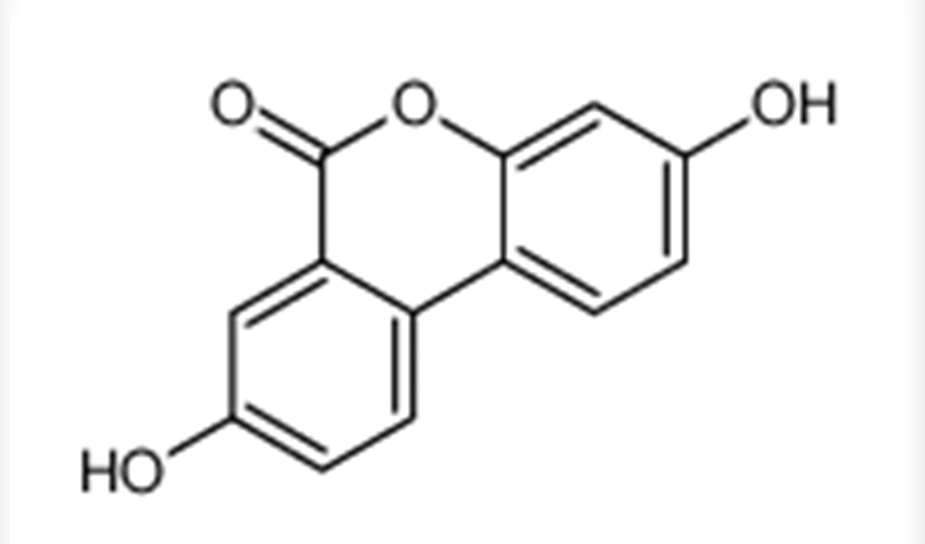Urolithin A is a compound derived from ellagic acid, which is found in certain fruits such as pomegranates and berries. It has gained attention for its potential health benefits, including anti-inflammatory and antioxidant properties. Here are general guidelines for extracting urolithin A and studying its effects:
Extraction of Urolithin A:
1.Source Material:
Obtain fruits rich in ellagic acid, such as pomegranates, strawberries, or raspberries.
2.Preparation of Extract:
Collect and clean the fruits to remove debris and contaminants.
Extract the juice or pulp using appropriate methods such as pressing or crushing.
3.Isolation of Urolithin A:
Utilize chromatographic techniques (e.g., column chromatography) to separate and isolate urolithin A from the extract.
Employ suitable solvents for elution, such as methanol or ethanol.

Characterization and Analysis:
1.Identification:
Confirm the presence of urolithin A using analytical techniques like high-performance liquid chromatography (HPLC) or mass spectrometry (MS).
Compare obtained data with known standards for urolithin A.
2.Quantification:
Determine the concentration of urolithin A in the extract.
Calibration curves using standard solutions of urolithin A can aid in quantification.
Biological Studies:
1.Cell Culture:
Choose relevant cell lines for the study (e.g., human cell lines like Caco-2 or prostate cells).
Culture cells under appropriate conditions.
2.Treatment with Urolithin A:
Administer varying concentrations of urolithin A to cells.
Include control groups without urolithin A treatment.
3.Incubation Period:
Determine an appropriate incubation period based on the goals of the study.
4.Cell Viability and Cytotoxicity Assays:
Assess cell viability using assays such as MTT or Alamar Blue.
Evaluate cytotoxic effects at different concentrations.
5.Molecular Analysis:
Explore the impact of urolithin A on gene expression using techniques like quantitative real-time polymerase chain reaction (qRT-PCR).
Investigate protein expression through Western blotting.
6.In Vivo Studies (if applicable):
Conduct animal studies to assess the effects of urolithin A.
Follow ethical guidelines and regulations for animal research.

Statistical Analysis:
1.Data Analysis:
Employ statistical methods to analyze results.
Use appropriate tests to compare treated and untreated groups.
2.Data Presentation:
Present data in a clear and organized manner, using graphs and tables as necessary.
Safety Precautions:
1.Laboratory Safety:
Adhere to laboratory safety protocols when handling chemicals and biological materials.
Use personal protective equipment (PPE) as required.
2.Ethical Considerations:
Comply with ethical guidelines for research involving human or animal subjects.
Always consult the latest literature and relevant safety guidelines when working with specific compounds or conducting biological studies. Additionally, obtain any necessary approvals from institutional review boards (IRBs) or ethics committees before initiating studies involving human or animal subjects.
